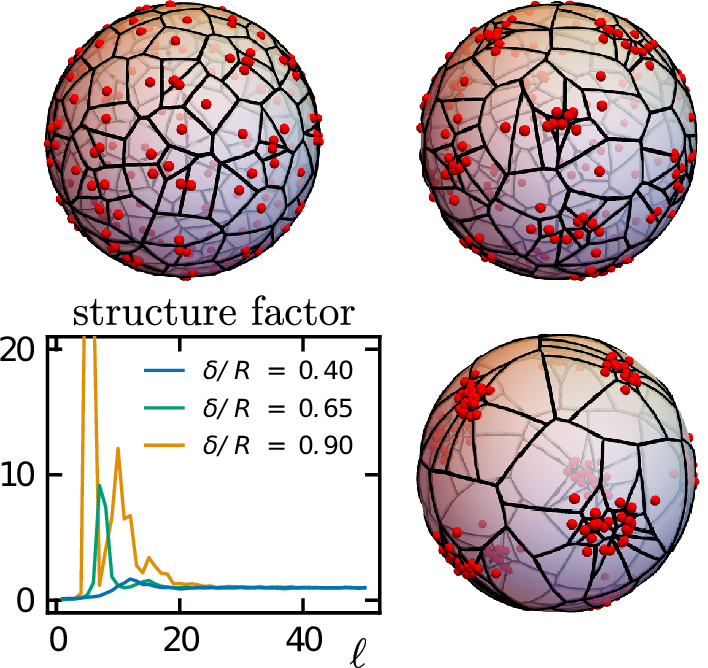Topology and geometry of a sphere create constraints for particles that lie on its surface, which they otherwise do not experience in Euclidean space. Notably, the number of particles and the size of the system can be varied separately, requiring a careful treatment of systems with one or several characteristic length scales. All this can make it difficult to precisely determine whether a particular system is in a disordered, fluid-like, or crystal-like state. Here, we show how order transitions in systems of particles interacting on the surface of a sphere can be detected by changes in two hyperuniformity parameters, derived from a spherical structure factor and cap number variance. We demonstrate their use on two different systems – solutions of the thermal Thomson problem and particles interacting via an ultra-soft potential of the generalized exponential model of order 4 – each with a distinct parameter regulating their degree of ordering. The hyperuniformity parameters are able to not only detect the order transitions in both systems but also point out the clear differences in the ordered distributions in each due to the nature of the interaction leading to them. Our study shows that hyperuniformity analysis of particle distributions on the sphere provides a powerful insight into fluid- and crystal-like orders on the sphere.
Download a copy of the manuscript

